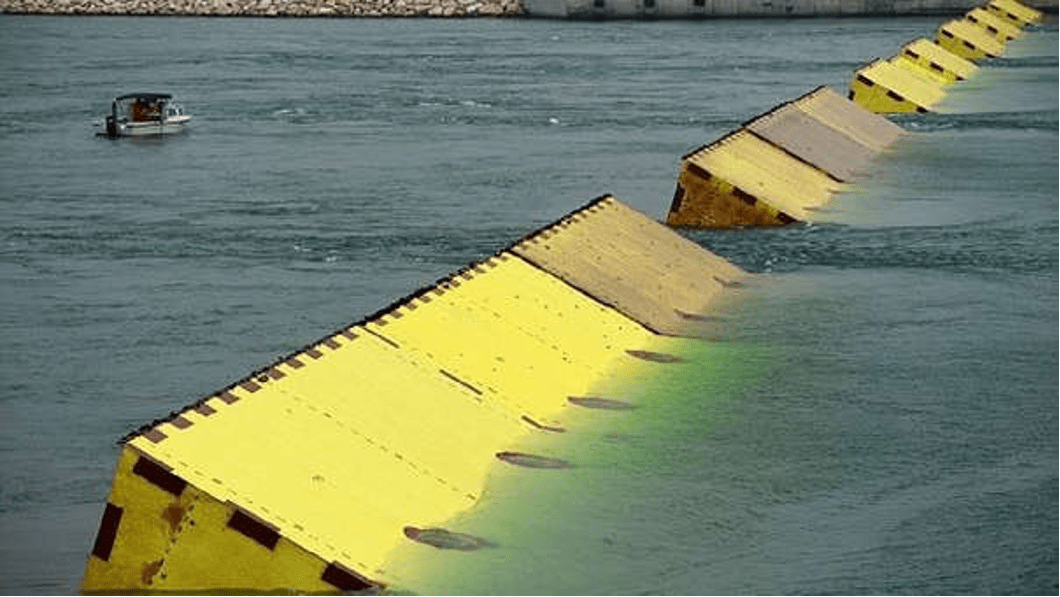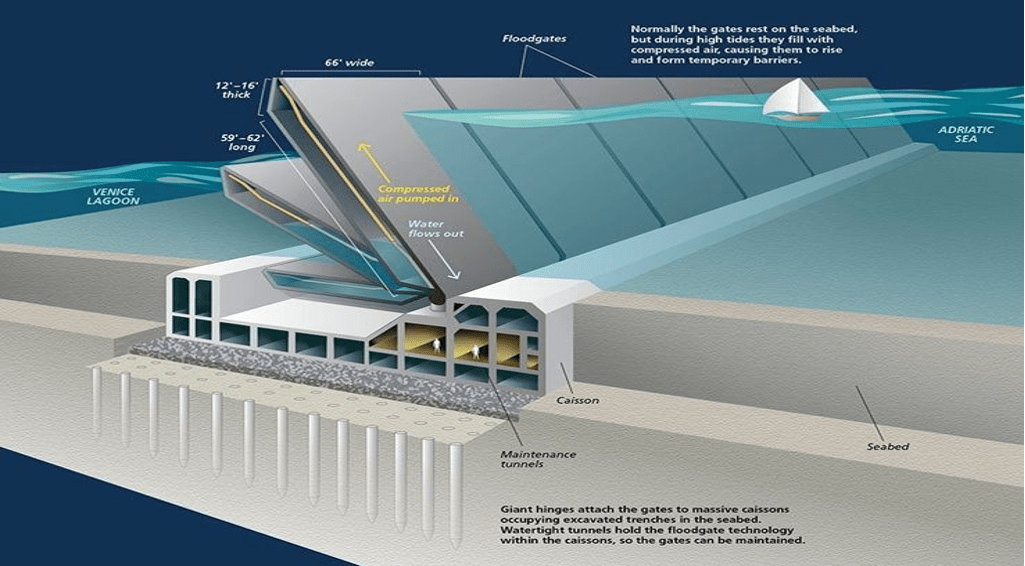Mose: Protecting the city of Venice


Venice, an island city, is located at the northwestern end of the Adriatic sea in northeastern Italy. It is a part of the large group of small islands in the Venice Lagoon. This island city is famous for its characteristic waterways, its palaces, its mask carnivals, and gondola rides. The rising sea level around the city due to climate change and increasing industrial activities pose a grave danger to the city and its tourist attractions. As a result, frequent floods and high tides often impacted the city.
The government had planned to temporarily close the inlets which are mainly responsible for tide spread from the Adriatic sea into the lagoon. Thus, a line of sandbanks was used at the three main water inlets: Lido, Malamocco, and Chioggia. In 2003, with the aim of costal reinforcement, improvement of the lagoon, and raising of the quay-sides, the MOSE project was started.
What is MOSE system?
Modulo Sperimentale Elettromeccanico or Electromechanical Experimental Module is a series of artificial barriers consisting of mobile sluice flood gates located at the three main lagoon inlets. There are 4 defense barriers: 2 barriers comprising 21 and 20 sluice gates for the north and south channels respectively at the bay of Lido; 1 barrier composed of 19 sluice gates at the inlet of Malamocco and 1 barrier of 18 sluice gates at the inlet of Chioggia. Each gate is bound by two hinges, 20m wide. The gate rests on a tower, where the control system of the gate is present. It is laid on a foundation 20m in length which has long steel and concrete piles of depth 38m and a diameter of 0.5 meter.
The sluice gates are filled with water. To open these gates, compressed air is filled in the sluice gate, which replaces the water present inside it. As the water comes out, the gate rotates around the hinges and rises to block the flow of the incoming tide. Once the sea level decreases and reaches the same level as that of the lagoon water, the compressed air is from these gates. The average closing time of inlets, including maneuver time for opening and closing of gates, is approximately 80 minutes. When the weather forecast predicts a high tide, the invisible inactive gates rise to temporarily isolate the lagoon from the sea, shielding the city from high tides and floods. These defense barriers can protect Venice and the lagoon for the tide rise from an established level of 110cm to a maximum of 3m.
The MOSE system was initially proposed in 1966 but was turned down due to lack of funds and environmental issues. The construction work of the MOSE project was expected to complete in 2016 . However, the project was always afflicted by corruption, cost overrun, and other unavoidable delays. As per the Italian newspaper “La Stampa”, the project is now expected to complete in 2022 . All the 78 sluice gates have been constructed, and currently, engineers are working on the mechanism of rising them synchronously. Due to cost overruns, various scams, and continuous delays, the estimated cost of the project is now 6 billion euros which were initially 1.3 billion euros. Once ready, it will be the largest dam structure in the world with each barrier having an approximate area of 603 square meter.